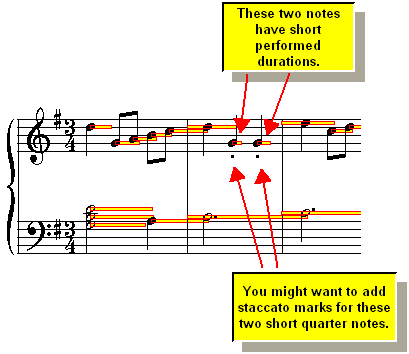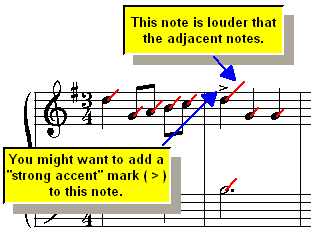|
<< Click to Display Table of Contents >> Accents and Articulations |
  
|
|
<< Click to Display Table of Contents >> Accents and Articulations |
  
|
One of the most common annotations in a score is the accent mark, such as the following:

Other types of annotations, such as the fermata, are technically neither accent marks nor articulations. However, for editing purposes, they are handled the same way in Composer. Such "accents" all have their symbols displayed immediately above or below notes.

The procedures for adding and editing accent marks, articulations and fermata symbols are described in the topic Editing Accent Marks
Sometimes you might want to view the Piano Roll Notation as you are annotating the score. For example, as you are adding staccato marks for notes, you can view the piano roll rectangles to see which notes are performed with a short duration relative to their as-notated duration. Those are the notes for which you might want to add staccato marks:

You might also want to see how loud the notes are as you are annotating the score. For example, as you are adding accent marks for notes, you can view the velocity vectors of notes to see which ones are relatively loud and therefore should have "strong accent" ( > ) marks:

A velocity vector is a line pointing about 45 degrees up and to the right from the notehead. The length of the line indicates the loudness of the note. The longer the line (vector), the louder the note.